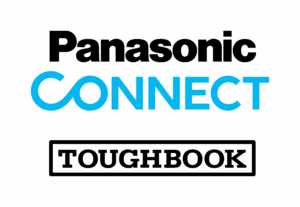Advancing digitalization, constantly increasing regulations and a growing cyber threat situation are putting IT departments under increasing pressure. But while the workload is increasing, the teams are not growing with it. The shortage of skilled workers in the industry is becoming more acute.
According to Bitkom, there will already be a shortage of 149,000 IT specialists in German companies in 2023, rising to 663,000 by 2040. In teams that are already too small, not only does the workload of daily work become too much, there is also a lack of time for the necessary training for a job in which requirements change rapidly.
Against this backdrop, as-a-Service (aaS) models have established themselves as a solution to relieve the burden on IT departments. Whether data center, workplace or firewall – as-a-Service offers are now available for almost every area of IT. But not without concerns. Data security, cost control, dependence on service providers, flexibility and governance – if you hand over responsibility, you also lose control – right? A fallacy. Good aaS solutions bring additional benefits in precisely these areas.
Costs and budgeting
as-a-Service models are generally considered to be cost-efficient as they do not require high initial investments. Nevertheless, hidden costs are often feared. Wrongly so, because the detailed service level agreements (SLAs), in which services are priced down to the cent, protect against nasty surprises. This means that companies only pay for what they actually use and can fully exploit the benefits of aaS. Thanks to the transparent SLAs, companies can easily understand when it is worth adjusting the service and when it is not. In addition, aaS models make a positive contribution to cash flow by flexibilizing rigid capital expenditure (CapEx) into operating costs (OpEx). This makes it possible to implement IT modernization projects even in economically challenging times.
Data protection and security
The fear of inadequate protection of sensitive company data is usually at the forefront of concerns about aaS models. However, it is often the outsourcing itself that leads to greater security.
One example: Due to specific compliance requirements for the IT infrastructure, it is advantageous in many industries to operate all or part of the IT in local data centers. However, in addition to considerable investment, this also requires a high level of planning, administration and maintenance. For many IT departments, this is unmanageable, whether due to a lack of capacity or expertise. The measure, which is supposed to lead to greater security by meeting compliance requirements, becomes a risk. An external service provider can meet the high standards because they are part of their core business. When selecting a partner, proven encryption techniques and other advanced security measures are important factors. Furthermore, many service providers offer additional services in their aaS packages, such as regular security audits and compliance checks.
Control and governance
Control and governance encompass far more than just the protection of sensitive data. They relate to the comprehensive control and monitoring of IT services to ensure that they are operated in line with the company’s strategic objectives and regulatory requirements. The precisely defined SLAs of as-a-Service contracts, which set clear KPIs, once again come into play here. These contracts define specific metrics such as availability, response times and problem resolution times, which enable the company to review the service provider’s performance as required and ensure that it meets expectations. Regular detailed reports clarify incidents, risk management measures, maintenance work, KPIs and other relevant information. This builds trust in the service provider and enables the company to make informed decisions and respond proactively to problems.
Dependence on the provider
There is also widespread concern about becoming too dependent on a service provider. The usage-based billing model of as-a-service models protects against this, as it allows companies to only pay for the services they actually use. This allows them to flexibly adjust their costs to their current needs and avoid long-term contractual commitments.
Contrary to the aforementioned concerns, as-a-service models are a secure, cost-efficient and flexible alternative to traditional IT solutions. Experience has shown that companies quickly realize that they benefit both technically and financially from faster implementation, increased adaptability and scalability. This not only leads to significant relief for their own IT departments, but also transforms corporate IT into a decisive driver of success in the long term.













